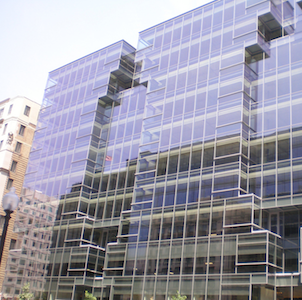
Buildings 2014
How can we increase building energy efficiency to reduce greenhouse gas emissions?
The IPCC estimates that buildings will account for over 25 percent of global greenhouse gas emissions in 2030 and that nearly half of these emissions can be avoided at modest cost. This contest seeks proposals on how emissions from buildings can be reduced, with a focus on increasing energy efficiency.
29
Proposals
As high performance green buildings increase in complexity, technicians need the skills to maintain buildings and achieve energy goals.
Climate adaptive energy conserving commercial building envelopes with analytical tool COFA:Climate Optimized Fenestration Assembly.
Unless ‘sufficiency’ is addressed with same rigour as ‘efficiency’, energy usage is inadvertently increased resulting in a rebound effect.
Green Spot Project: informs with real-time data, empowers through participation, and greens your space by tracking positive progress
Using Existing Governance to make retrofitting enhanced Energy Efficiency into Existing Buildings, Easy.
Stop Waiting: Lighting uses 20% or more of a building’s electricity, and LEDs save 50% on energy and last longer than traditional lights.
greEntrance – the software helping real estate companies to find the most efficient green building rating system for their individual needs.
If an outsider could collect 100% of the savings of creating an energy efficient building. It would create a market for this kind of work.
Gamification of houses and communities to bet on reducing energy use with the reward of 25 times the bet and star house award from BEE.
Energy efficient building technology is abundant but unaffordable with bank financing. Local interest free financing can make it affordable.
Innovative financing for small-scale energy efficiency projects. Each penny saved is invested in a sustainable local community.
Minimise energy consumption of a fast growing commercial building sector through implementing energy efficient building envelope designs.
Passive design, an approach to building design that uses the building architecture to minimize energy consumption.
...buildings will account for over 25% of global greenhouse ... and culprit make Earth store, soak , absorb smaller CO2
Imagine we don't know anything about room thermostats and we design one from the beginning. Would we end up to the thermostats we use now?
Bring cities to energy independence through carbon, energy and cost neutrality.
Low cost, high carbon capturing efficiency, readily available algae growing kit, engineered to a self-sustainable business model.
Renewable Energy Resort Conference Center. Mixed use development with Condo, Hotel, Office and Retail. All powered by www.carnegiewave.com
Use deep cold sea water as an air conditioning source for buildings along coastline and perhaps a few miles inland.
Most waste CO2 buildings put out is in production. 15 million new buildings are expected by 2015. Retrofitting with clean energy solves this
As Digital Termostats - DIY MEH shall make online easy to tailor energy, water, light smart house modules making wide retrofit for housing
I've noticed that metropolitan buildings near coastlines focus wind down corridors, perhaps windmills can be attached to these structures.
Incorperate Solar Cells into the upper twenty % of major buildings on the East and West sides in order to reduce energy grid consumption.
Use the excess heat in cold water used in a home to make the hot water with a super-efficient, PV powered, water-to-water heat pump.
All dwelling units have electricity and gas, like the hybrid car you can alternate energy depending on peak demands.
The wood from old homes that were used as studs could be recycled and used to make Cross Laminated Timber Panels (CLT).
Existing buildings show a median commissioning cost of US$.27 per ft2, energy savings of 15%, and a simple payback period of .7 years.
All homes and buildings should be required to have at least 1/4 power from solar.
Significantly reduce carbons from Portland cement by use of our cellular, air-entrainment machine reinforced with Basalt rebars, mesh, fiber